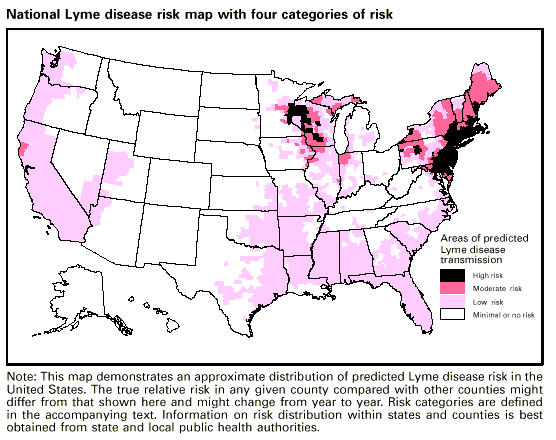
Lyme disease is a bacterial infection that is normally transmitted by a bite from a tick. "In the United States, Lyme disease is caused by the bacterium Borrelia burgdorferi, which is carried primarily by deer ticks." People who mainly come in contact with this disease are people who live or spend time in grassy or wooded areas.
This condition is found everywhere in the world except Antarctica and some areas have a higher prevalence compared with others. In the United States, Lyme disease is the most common vector-borne disease and has been reported in almost all states with a higher prevalence in the coastal northeast, Mid-Atlantic States, Wisconsin, and Minnesota, and northern California. Lyme disease is extremely common in Europe, and it is much more prevalent compared with the United States and Canada.
The early symptoms of this disease include a rash and flu-like symptoms; but if this disease is left untreated more severe symptoms occur such as joint pain, neurological problems, cognitive defects, and heart rhythm irregularities. During the early stages of the disease, oral antibiotics can be used to treat it. If the disease involves the central nervous system, treatment with an intravenous antibiotic for 14 to 28 days may be needed. The best way to prevent from getting this disease is to wear long pants and sleeves in grassy and wooded areas, use insect repellents, always check children and dogs for ticks, and remove ticks as soon as you as you see them to avoid the tick from biting you.
Lyme People: Lyme Disease is Found Worldwide (http://www.lymepeople.com/lyme-disease-is-found-worldwide/)
http://www.webmd.com/rheumatoid-arthritis/arthritis-lyme-disease
http://theconference.ca/the-spread-of-lyme-disease
http://www.articlesnatch.com/Article/Europe–Africa–Australia–Asia-And-America—Lyme-Disease-Is-In-The-Rise/366251#.UIDFeO-LKq
http://www.mayoclinic.com/health/lyme-disease/DS00116/DSECTION=causes







